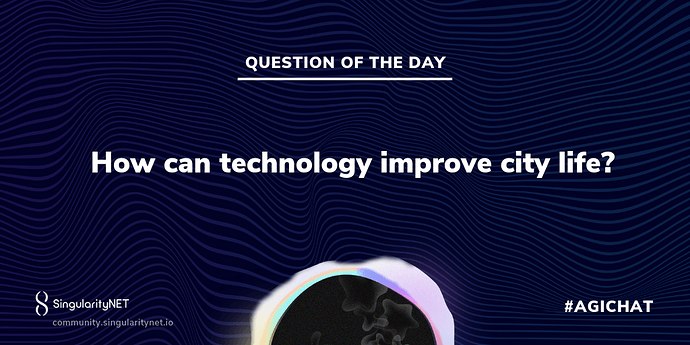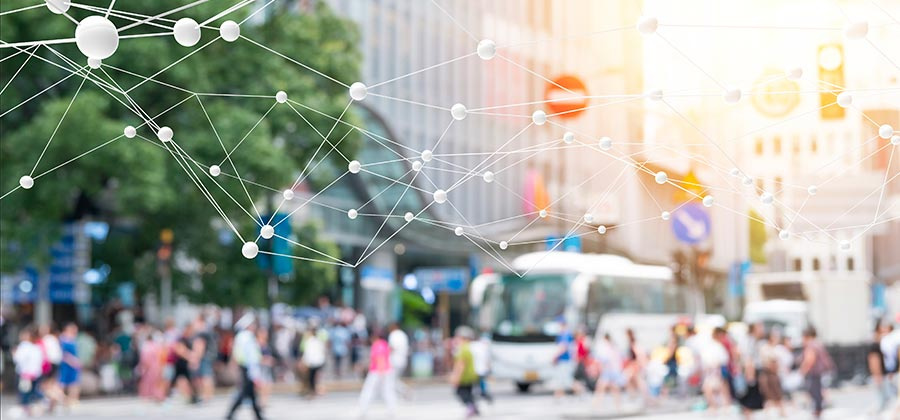More than 6.5 billion people are expected to live in cities by 2050, according to UN estimates. That figure represents more than double the number of people currently living in such settlements. In order to withstand the pressure on the infrastructure that this process of urbanization will bring, smart cities referring to a concept by which cities’ traditionally offline systems such as water supply networks are brought online and connected to sophisticated analysis and control systems are expected to grow commensurate with this process of worldwide urbanization.
The convergence of smart technologies coming together to create the emerging properties of smart cities is on the whole already here with us today. We only need to implement them bring them together to really gain the benefits they can afford us.
Here are five primary technologies that together will form the backbone of our cities of the future.
1. The Internet of things
The Internet of things (IoT) is the network of devices, vehicles, and home appliances that contain electronics, software, actuators, and connectivity which allows these things to connect, interact and exchange data.
IoT involves extending Internet connectivity beyond standard devices, such as desktops, laptops, smartphones and tablets, to any range of traditionally dumb or non-internet-enabled physical devices and everyday objects. Embedded with technology, these devices can communicate and interact over the Internet, and they can be remotely monitored and controlled.
Smart city IoT starts with a smart public infrastructure to deliver clean water, dependable power, safe gas, and efficient public lighting. As smart cities free up resources by intelligently delivering essential services, they are able to invest in other services to improve the quality of life.
2. Quantum Cryptography
Quantum cryptography draws its strength from the weirdness of reality at small scales. The particles making up our universe are inherently uncertain creatures, able to simultaneously exist in more than one place or more than one state of being. They choose how to behave only when they bump into something else or when we measure their properties.
Quantum key distribution (QKD) is a secure communication method which implements a cryptographic protocol involving components of quantum mechanics. It enables two parties to produce a shared random secret key known only to them, which can then be used to encrypt and decrypt messages. It is often incorrectly called quantum cryptography, as it is the best-known example of a quantum cryptographic task.
An important and unique property of quantum key distribution is the ability of the two communicating users to detect the presence of any third party trying to gain knowledge of the key. QKD is already available commercially, from vendors like Toshiba, Qubitekk and ID Quantique. Yet QKD continues to be expensive and requires independent infrastructure, unlike post-quantum encryption that can run over pre-existing networks.
It is critical to the scalability of automated systems such as is required within Smart cities to ensure public safety and security.
3. Automation
Automation is the technology by which a process or procedure is performed with minimum human assistance which will be critical in creating smart systems that our future cities will run on. Coupled with artificial intelligence we will be able to automate many of the tasks that previously could only be managed by humans, leading us toward a time where we may be able to automate all of our societies requirements.
4. Artificial Intelligence.
Artificial intelligence is a branch of computer science that aims to create intelligent machines.
Research associated with artificial intelligence is highly technical and specialized. The core problems of artificial intelligence include programming computers for certain traits such as: Knowledge / Reasoning / Problem solving/ Perception / Learning / Planning / Ability to manipulate and move objects.
Coupled with Machine Learning it is possible to create artificially intelligent systems that can adapt to their surroundings taking advantage of ‘big data’ and make decisions that are based on real-world learning.
The impact of AI on Smart cities and the wider economy is immense
5. Decentralisation
Decentralization is the process by which the activities of an organization, particularly those regarding planning and decision-making, are distributed or delegated away from a central, authoritative location or group. Concepts of decentralization have been applied to group dynamics and management science in private businesses and organizations, political science, law and public administration, economics, money and technology.
These broad technologies break down into a myriad of smart technologies such as smart sensors, automated vehicles and the decentralised autonomous organisations that will govern many of the public services of the future.
So today on #AGICHAT we ask ‘How can technology improve city life?’
#AGICHAT #futurism #artificialintelligence #debate singularitynet #emergingtechnologies #futureofcities #decentralisation #dao



